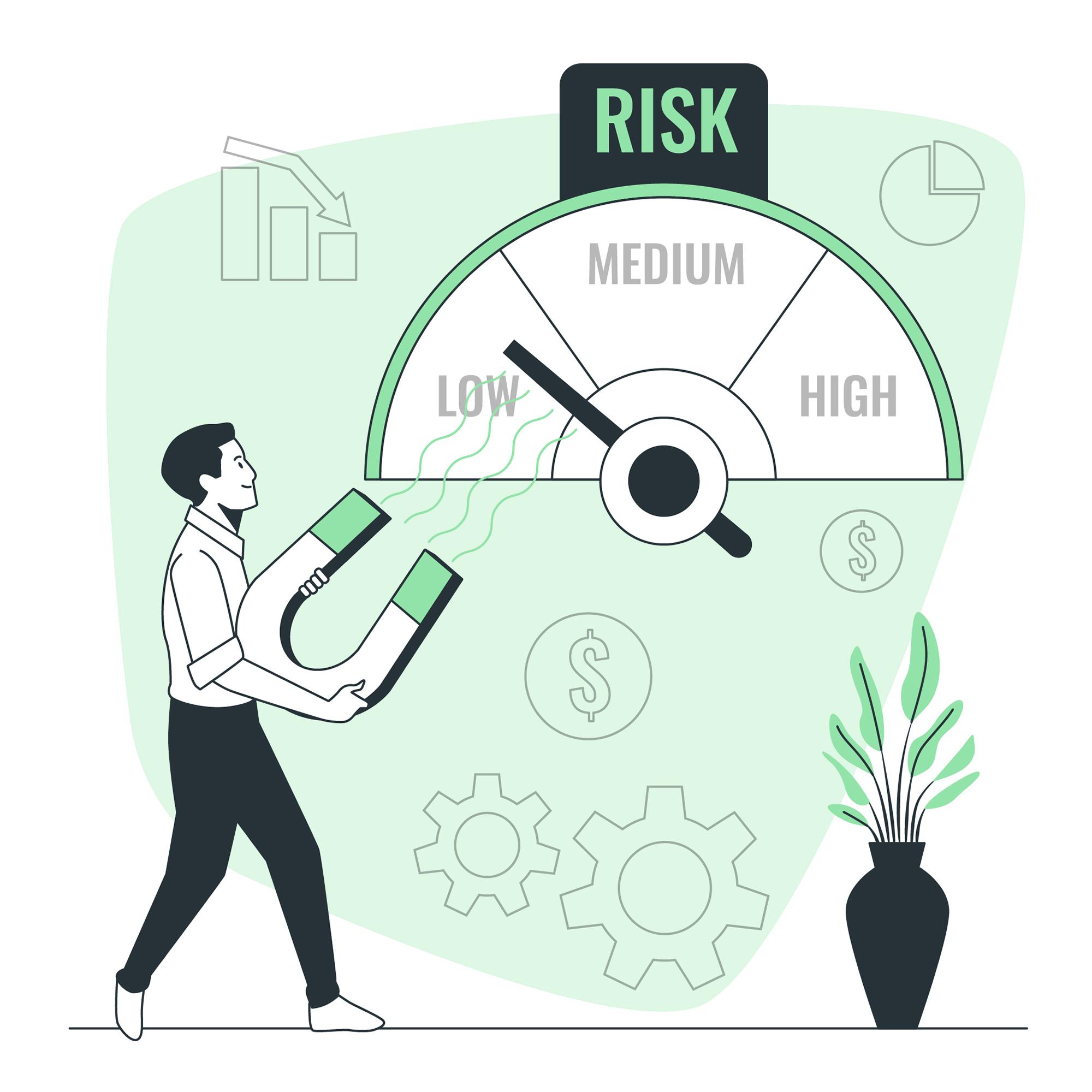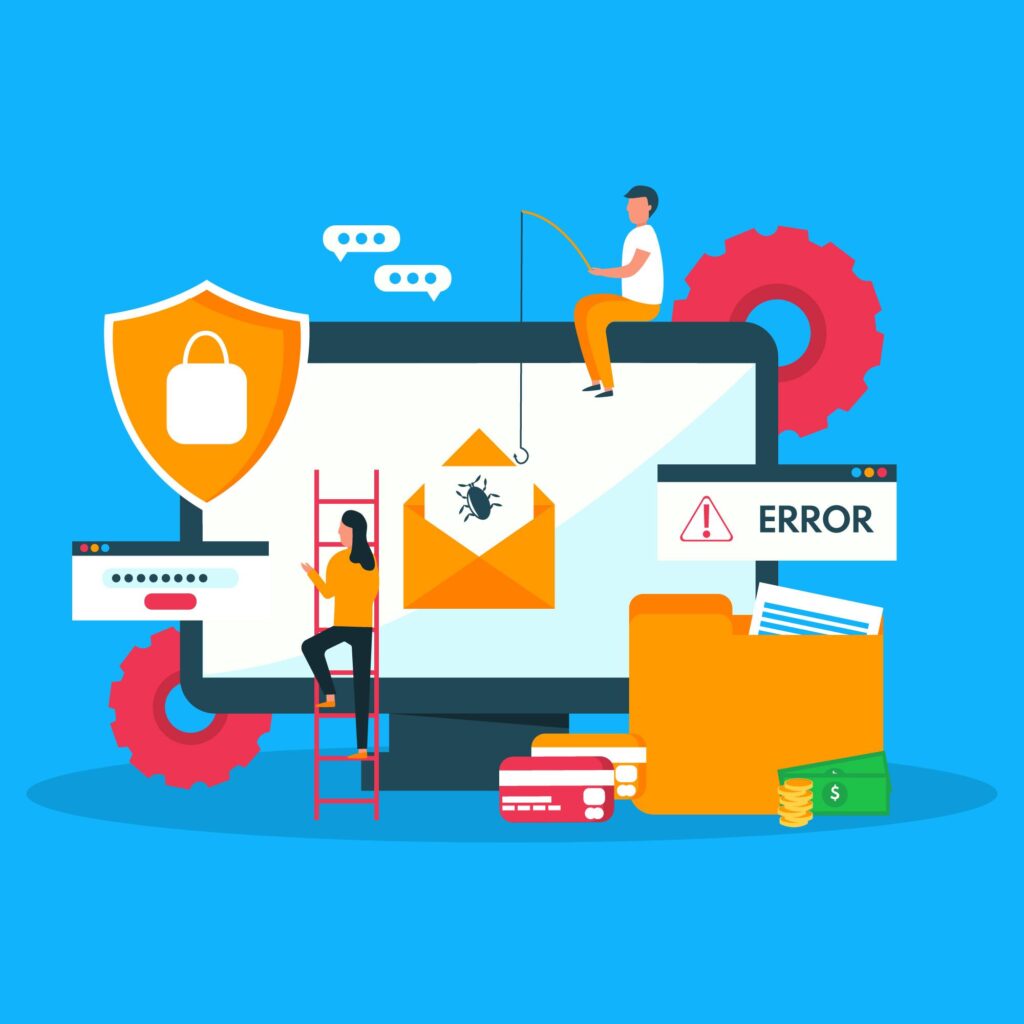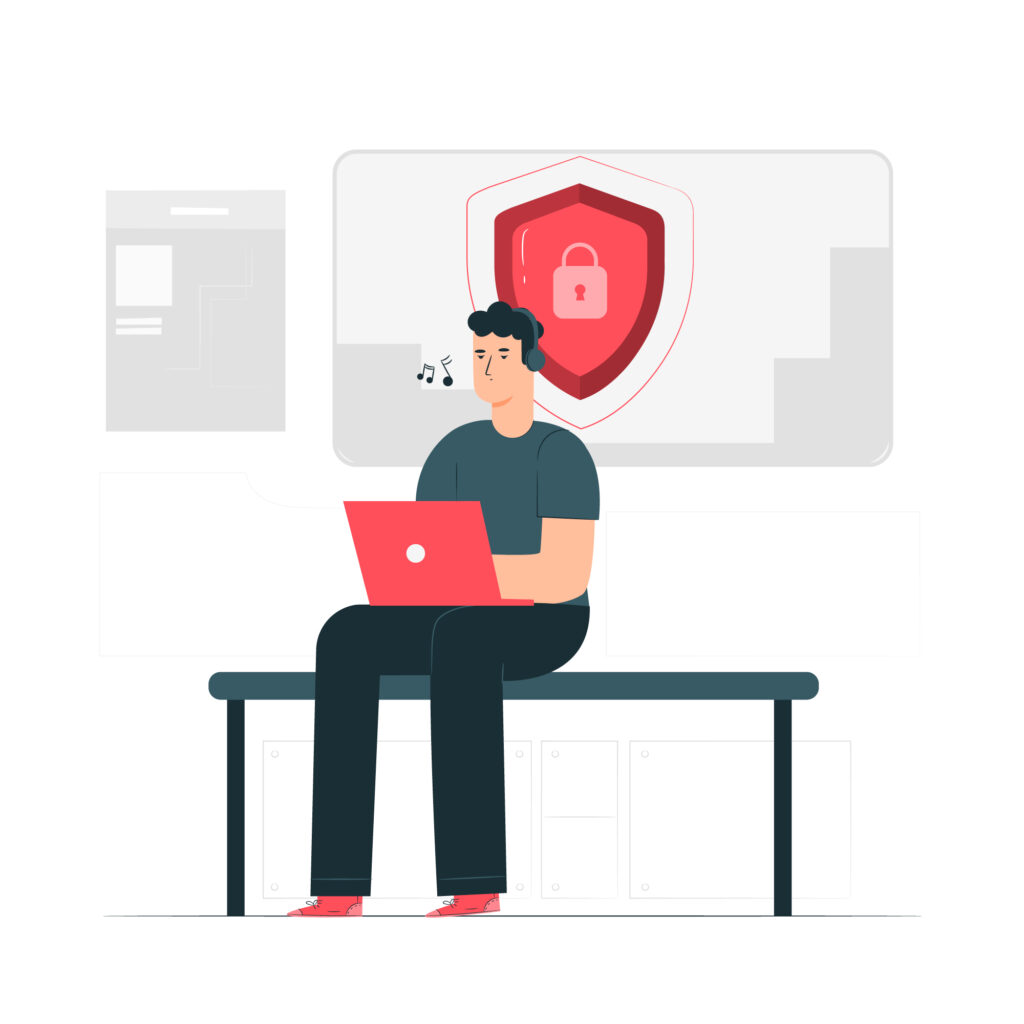 By: John Abhilash / August 16, 2024
By: John Abhilash / August 16, 2024
In the ever-evolving landscape of cybersecurity, conducting a comprehensive risk assessment is paramount for organizations aiming to protect their digital assets and maintain a robust security posture. This blog will delve into the intricate details of a 5-step risk assessment process, providing technical insights and practical examples to help you implement a robust security strategy.
Understanding Risk Assessment in the Context of Cybersecurity
Risk assessment in cybersecurity is a systematic process of identifying, analyzing, and evaluating potential threats to an organization’s information systems, networks, and data. It involves quantifying the probability and potential impact of various security events, allowing organizations to prioritize their mitigation efforts effectively.
These steps provide a structured framework for comprehensively assessing and managing risks within an organization.
1.Asset Identification and Threat Modeling
The initial step in the risk assessment process involves creating a comprehensive inventory of your organization’s digital assets and modeling potential threats.
Asset Identification:
Hardware assets (servers, workstations, network devices, IoT devices)
Software assets (operating systems, applications, databases, custom code)
Data assets (customer information, intellectual property, financial data)
Network infrastructure (LANs, WANs, VPNs, cloud resources)
For each asset, document:
Asset value
Data classification level
Location (physical or logical)
Owner and custodian
Threat Modeling: Utilize frameworks like STRIDE (Spoofing, Tampering, Repudiation, Information Disclosure, Denial of Service, Elevation of Privilege) to systematically identify potential threats. Consider:
External threats (APT groups, cybercriminals, hacktivists)
Internal threats (malicious insiders, negligent employees)
Environmental threats (natural disasters, power outages)
Example: A financial services company might identify its trading algorithm as a critical software asset and recognize advanced persistent threats (APTs) targeting financial institutions as a significant threat to this asset.
2.Vulnerability Assessment and Impact Analysis
After asset identification and threat modeling, the next step is to conduct a thorough vulnerability assessment and analyze the potential impact of successful exploits.
Vulnerability Assessment:
Utilize automated scanning tools (e.g., Nessus, OpenVAS, Qualys)
Conduct manual penetration testing
Review code for security flaws (using static and dynamic analysis tools)
Assess configuration settings against security benchmarks (e.g., CIS Benchmarks)
Common vulnerabilities to look for:
Unpatched software
Misconfigured systems or networks
Weak cryptographic implementations
Insecure API endpoints
SQL injection flaws
Cross-site scripting (XSS) vulnerabilities
Impact Analysis: For each identified vulnerability, assess the potential impact using metrics such as:
Confidentiality Impact: How much sensitive data could be exposed?
Integrity Impact: To what extent could data be altered or corrupted?
Availability Impact: How significantly could operations be disrupted?
Quantify impacts in terms of:
Financial losses (direct costs, regulatory fines, lost revenue)
Reputational damage (customer trust, brand value)
Operational disruptions (downtime, productivity loss)
Legal and compliance consequences
Example: A vulnerability assessment might reveal that your organization’s web application is susceptible to SQL injection attacks. The potential impact could include unauthorized access to sensitive customer data, violating data protection regulations and resulting in significant financial penalties and reputational damage.
3.Risk Analysis and Probability Assessment
The third step involves analyzing the identified risks and estimating their likelihood of occurrence. This step is crucial for prioritizing mitigation efforts.
Risk Analysis:
Utilize quantitative risk analysis methods (e.g., Annual Loss Expectancy, Value at Risk)
Implement qualitative risk analysis techniques (e.g., risk matrices)
Consider using the FAIR (Factor Analysis of Information Risk) framework for a more comprehensive analysis
Probability Assessment: To estimate the likelihood of various security events:
Analyze historical incident data
Review threat intelligence feeds
Consider the current threat landscape and attacker motivations
Evaluate the effectiveness of existing security controls
Use a probability scale (e.g., 1-5 or Low/Medium/High) to categorize risks based on their likelihood of occurrence.
Example: If your organization frequently detects sophisticated phishing attempts targeting executives, you might categorize this as a high-probability, high-impact risk that requires immediate attention.
4.Risk Mitigation Strategy Development
Once risks are analyzed and prioritized, develop comprehensive strategies to mitigate them. This step involves selecting and implementing appropriate security controls.
Mitigation Strategies:
Risk Reduction: Implement controls to lower the probability or impact of the risk
Risk Transfer: Shift some of the risk to third parties (e.g., cybersecurity insurance)
Risk Acceptance: For low-level risks, it may be more cost-effective to accept them
Risk Avoidance: Eliminate the risk by removing the vulnerable asset or process
When developing mitigation strategies, consider:
Technical controls (firewalls, IPS/IDS, encryption, access control systems)
Administrative controls (policies, procedures, security awareness training)
Physical controls (biometric access, surveillance systems, secure data centers)
Align your strategies with industry frameworks such as:
NIST Cybersecurity Framework
ISO/IEC 27001
CIS Controls
Example: To address the risk of data exfiltration, you might implement a multi-layered approach including data loss prevention (DLP) tools, encryption for data at rest and in transit, and regular data access audits.
5.Continuous Monitoring and Review
The final step in the risk assessment process is ongoing monitoring and periodic review. This ensures that your risk assessment remains relevant and effective as the threat landscape evolves.
Continuous Monitoring:
Implement Security Information and Event Management (SIEM) systems
Utilize User and Entity Behavior Analytics (UEBA) tools
Deploy Intrusion Detection and Prevention Systems (IDS/IPS)
Conduct regular vulnerability scans and penetration tests
Monitor security metrics and key performance indicators (KPIs)
Periodic Review:
Schedule quarterly or bi-annual reviews of your risk assessment
Update asset inventory and threat models
Reassess the effectiveness of implemented controls
Stay informed about emerging threats and vulnerabilities
Adjust your risk mitigation strategies as needed
Example: Implement a continuous vulnerability management program that includes daily automated scans, weekly manual reviews, and monthly penetration testing exercises to identify and address new vulnerabilities promptly.
Real-World Case Study: Equifax Data Breach
Let’s examine how the Equifax data breach of 2017 illustrates the importance of a robust risk assessment process:
Asset Identification and Threat Modeling: Equifax failed to maintain an up-to-date inventory of its IT assets. This led to an incomplete understanding of their attack surface, leaving critical systems vulnerable.
Vulnerability Assessment and Impact Analysis: A critical vulnerability in the Apache Struts framework (CVE-2017-5638) was not identified and patched in a timely manner. The potential impact of this vulnerability was severely underestimated.
Risk Analysis and Probability Assessment: Equifax did not adequately assess the likelihood of a breach occurring through this vulnerability, despite public disclosures and active exploits in the wild.
Risk Mitigation Strategy Development: The company’s patch management process was inadequate, failing to apply critical security updates promptly. Additionally, network segmentation was insufficient, allowing attackers to move laterally once they gained initial access.
Continuous Monitoring and Review: Equifax’s monitoring systems failed to detect the breach for 76 days, allowing attackers to exfiltrate sensitive data over an extended period.
The consequences of these failures in the risk assessment process were severe:
147 million consumers’ sensitive data exposed
$575 million settlement with the FTC
Significant reputational damage and loss of consumer trust
Long-term costs for credit monitoring services for affected individuals
This case study underscores the critical importance of a thorough, ongoing risk assessment process in preventing and mitigating cyber attacks.
Best Practices for Effective Risk Assessment
To maximize the effectiveness of your risk assessment efforts:
Adopt a risk-based approach to security, focusing resources on the most critical assets and significant threats.
Integrate risk assessment into your overall security program and DevSecOps practices.
Leverage automation and machine learning to enhance the accuracy and efficiency of your risk assessments.
Establish clear roles and responsibilities for risk management across the organization.
Foster a culture of security awareness and risk consciousness among all employees.
Tools to Support Your Risk Assessment Process
Several advanced tools can enhance your risk assessment capabilities:
Vulnerability Management: Tenable.io, Qualys VMDR, Rapid7 InsightVM
Threat Intelligence: Recorded Future, ThreatConnect, AlienVault OTX
GRC Platforms: RSA Archer, MetricStream, ServiceNow GRC
SIEM and Security Analytics: Splunk Enterprise Security, IBM QRadar, Exabeam
Risk Quantification: RiskLens, FAIR-U
Conclusion
Implementing a rigorous, technical risk assessment process is crucial for organizations seeking to protect their digital assets and maintain a strong security posture. By meticulously following the 5 steps of risk assessment outlined in this blog – asset identification and threat modeling, vulnerability assessment and impact analysis, risk analysis and probability assessment, risk mitigation strategy development, and continuous monitoring and review – you can significantly enhance your organization’s resilience against cyber threats.
Remember that risk assessment is an ongoing, iterative process that requires constant attention and adaptation. Regularly revisiting and updating your risk assessment will help ensure that your security measures remain effective in the face of an ever-changing threat landscape.
Enhancing Your Risk Assessment with Guardian
To further strengthen your risk assessment process and overall security posture, consider implementing Guardian, an Application Security Posture Management (ASPM) solution. Guardian complements the 5 steps of risk assessment by providing a comprehensive view of your security landscape and actionable insights.
Key Features of Guardian:
Centralized Dashboard: Get a holistic view of your security posture with a centralized dashboard that consolidates data from multiple tools.
Noise Reduction: Guardian’s intelligent algorithms reduce false positives and highlight the most critical vulnerabilities, helping you prioritize remediation efforts.
Correlated Insights: By correlating data from different security tools, Guardian provides deeper insights into vulnerabilities and potential attack vectors.
By incorporating Guardian into your risk assessment workflow, you can streamline the process, gain more accurate insights, and make more informed decisions about your security strategy. This integrated approach ensures that your organization stays ahead of potential threats and maintains a robust security posture in an increasingly complex digital environment.







Leave a Comment